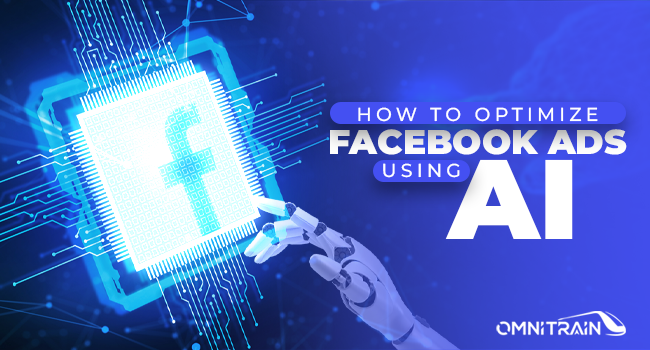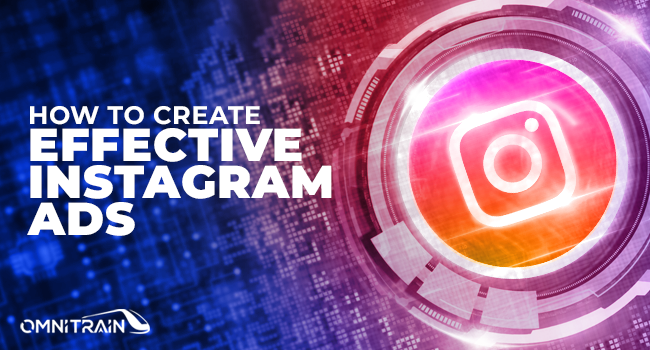Enhance Brand Visibility: 7 Winning Ways in 2024
Enhancing brand visibility is key to capturing your audience’s attention and ensuring your brand stands out in the crowded digital landscape. If you’re aiming to improve brand visibility, here are a few core strategies:
- Define Your Brand’s Purpose: Clearly state the unique problem your brand solves.
- Optimize Your Social Media Presence: Focus on platforms where your audience spends time.
- Highlight Unique Offerings: Emphasize what makes your brand different from competitors.
- Leverage SEO: Use strategic keywords to improve brand visibility online.
- Engage with Customers: Foster interaction and build relationships to increase visibility.
In today’s marketing world, a strong brand presence is critical. Brands like Coca-Cola and Nike demonstrate the power of making a brand memorable and trusted. As you start on your journey to boost brand visibility, consider each point in the list and infuse them into your strategy for improved reach and engagement.
As Josh Benson, founder of OmniTrain, I’ve dedicated my career to helping brands improve brand visibility through thoughtful strategy and innovative solutions. From years of experience, I’ve seen first-hand how important it is for brands to effectively communicate their uniqueness and value.
Define Your Brand’s Functionality
At the heart of every successful brand is a clear understanding of its purpose. To truly improve brand visibility, you need to articulate the specific problem your brand solves. This is your brand’s reason for existing.
Why Problem-Solving Matters
Every brand must fill a gap in the market. Consider this: What gap does your brand fill? Knowing this helps you connect with your audience on a deeper level. Your brand should address a specific issue that resonates with your target customers.
For example, when Apple launched the iPhone, it wasn’t just selling a new phone. It solved the problem of having multiple devices by combining a phone, music player, and internet communicator into one sleek package.
Crafting Your Brand Purpose
Your brand purpose is more than just a mission statement. It’s a promise to your customers. Answer these questions to define it:
- What problem does your brand solve?
- How does it add value to the existing market?
- Is it a pioneer or an alternative solution?
By addressing these questions, you create a clear, focused brand identity. This identity should guide all your marketing efforts, from social media to SEO.
Real-World Example: Nike
Nike is a great example of a brand that has defined its purpose well. Its mission is to “bring inspiration and innovation to every athlete in the world.” This purpose is not just about selling shoes; it’s about inspiring people to be active and reach their potential.
Visual Representation
Building a Strong Foundation
Once you’ve defined your brand’s functionality, you can build on this foundation to increase visibility. Use this clarity to inform your social media strategy, highlight unique offerings, and leverage SEO effectively.
In the next section, we’ll explore how to improve brand visibility with social media, focusing on engaging your target audience where they spend their time.
Improve Brand Visibility with Social Media
Social media is a powerful tool to improve brand visibility. It’s where your audience hangs out, shares stories, and finds new things. To make the most of it, you need a solid social media strategy. Let’s break down how you can use social media to boost your brand’s presence.
Crafting Your Social Media Strategy
A strong social media strategy starts with knowing your target audience. Who are they? What do they like? Where do they spend their time online? Answering these questions helps you tailor your content to their interests.
Engagement is key. Don’t just post and ghost. Interact with your followers. Respond to comments, answer questions, and join conversations. A dynamic relationship with your audience can make your brand more relatable and trustworthy.
Stat: Brands using employee advocacy generate 25-40% more engagement compared to those that don’t.
Know Your Audience
To engage effectively, you need to understand your audience. Use tools like social listening to get insights into what people are saying about your brand and industry. This helps you stay relevant and adjust your strategy based on real-time feedback.
Example: Imagine you’re a fitness brand. Your audience might be health enthusiasts who follow fitness influencers. Engaging with these influencers can introduce your brand to a wider audience. But remember, keep interactions non-promotional and add value to the conversation.
Consistent and Value-Driven Content
Posting consistently helps keep your brand top of mind. But it’s not just about frequency; it’s about quality. Share content that adds value. This could be tips, tutorials, or behind-the-scenes looks.
Video content is particularly effective. It’s engaging and shareable. Even small businesses can create high-quality videos with today’s tools, like smartphones and laptops.
Real-World Example: Wendy’s
Wendy’s is a master of social media engagement. Their witty and humorous tweets have gained them a massive following. They interact with their audience in a way that’s not only entertaining but also aligns with their brand identity.
Visual Representation
Building Relationships
Social media is not just about broadcasting your message; it’s about building relationships. Consider partnerships with influencers or other brands to reach new audiences. Just ensure these partnerships align with your brand values.
As you refine your social media strategy, engagement is a two-way street. It’s about listening and responding. This approach not only increases visibility but also builds a community around your brand.
Next, we’ll dive into how highlighting your unique offerings can further set your brand apart in a crowded market.
Highlight Unique Offerings
In a crowded market, standing out is crucial. Highlighting your unique offerings is one way to do this. Your brand’s unique selling proposition (USP) is what sets you apart from the competition. It’s what makes your brand special and worth choosing over others.
Unique Selling Proposition (USP)
The USP is the heart of your brand. It answers the question: Why should customers choose you? To define your USP, consider these questions:
- What makes your product or service different?
- What benefits do you offer that others don’t?
- How do you solve your customers’ problems in a unique way?
For example, if you offer eco-friendly packaging, that’s a unique selling point. It’s something specific that appeals to environmentally conscious consumers.
Differentiation
Differentiation is about making your brand distinct. It involves highlighting aspects of your brand that are different from competitors. This could be product features, pricing, customer service, or even brand values.
Tip: Use storytelling to convey your brand’s uniqueness. Share stories that show how your product or service makes a difference in people’s lives.
Real-World Example: Apple
Apple is a prime example of a brand that has mastered differentiation. Their products are known for sleek design and user-friendly interfaces. They don’t just sell gadgets; they sell a lifestyle. This clear differentiation has helped Apple build a loyal customer base.
Visual Representation
Creating a visual representation of your USP can be powerful. Infographics, videos, and images can quickly communicate what makes your brand unique.
Consistency is Key
Ensure your USP and differentiation strategies are consistent across all channels. From your website to social media, every touchpoint should reflect your brand’s unique offerings.
Engaging Content
Engaging content helps communicate your USP effectively. Use blog posts, videos, and social media updates to highlight your unique features. For instance, if your brand offers a groundbreaking technology, create a video showcasing it in action.
By focusing on your unique offerings, you can create a strong brand identity that resonates with your audience. This not only helps improve brand visibility but also builds trust and loyalty among your customers.
Next, we’ll explore how leveraging SEO can further amplify your brand’s presence online.
Leverage SEO for Brand Visibility
Search Engine Optimization (SEO) is a powerful tool to improve brand visibility. By using the right strategies, you can make your brand more visible to potential customers online.
SEO Strategy
An effective SEO strategy begins with understanding your audience. What are they searching for? How can you meet their needs?
Start by researching relevant keywords. Tools like SEMrush or Ahrefs can help you find trending keywords. These tools show you the keywords people use when searching for products or services like yours.
Tip: Use long-tail keywords. These are specific phrases that are less competitive but more targeted. For example, instead of “shoes,” use “eco-friendly running shoes.”
Keywords
Once you have your keywords, it’s time to integrate them. Place them strategically in your content, but keep it natural. Overloading content with keywords can backfire.
- Title and Headings: Use keywords in titles and headings for better ranking.
- Content: Incorporate keywords throughout your content. Aim for a keyword density of about 1-2%.
- Meta Descriptions: Include keywords in meta descriptions to improve click-through rates.
Remember: Quality content is key. Google values content that answers users’ questions and provides value.
Search Engine Optimization
SEO is more than just keywords. It involves optimizing your entire website for better performance.
- Fast Load Times: Ensure your website loads quickly. Slow sites frustrate users and hurt your ranking.
- Mobile Friendliness: With more people using mobile devices, a mobile-friendly site is crucial.
- User Experience: Make navigation easy. Users should find what they need without hassle.
Tracking and Measuring
Track your progress using tools like Google Analytics. This helps you understand what’s working and where you need improvement.
- Website Traffic: Monitor the number of visitors and where they come from.
- Search Engine Rankings: Keep an eye on how your pages rank for chosen keywords.
Quote: “SEO is not about gaming the system. It’s about learning how to play by the rules.” – Rand Fishkin
Real-World Example: HubSpot
HubSpot is a great example of a brand using SEO effectively. They create valuable content around targeted keywords, helping them rank high in search results. This approach has significantly boosted their brand visibility.
Consistency
Consistency is key in SEO. Regularly update your content and monitor your strategies. SEO is not a one-time effort; it’s an ongoing process.
By leveraging SEO, you can make your brand more visible online. This not only attracts more visitors but also builds credibility and trust with your audience.
Next, we’ll look at how increasing online interaction can further boost your brand’s presence.
Increase Online Interaction
Boosting your brand’s online interaction is like opening a two-way street with your audience. It’s not just about talking; it’s about listening and engaging. Here’s how you can make it happen:
Partnerships
Forming partnerships is a smart way to reach new audiences. When you team up with other brands or influencers, you tap into their followers. This can significantly improve brand visibility.
- Collaborate on Content: Create joint blog posts, webinars, or social media content. This not only shares your brand message but also introduces you to new potential customers.
- Cross-Promotion: Share each other’s content on social media. This mutual promotion can expand your reach without extra cost.
Example: A tech company partners with a popular gadget reviewer to co-host a live stream. They both benefit from each other’s audience, increasing visibility and engagement.
Customer Engagement
Engaging directly with customers builds relationships. It’s not just about selling; it’s about creating a community.
- Social Media Interaction: Respond to comments, share user-generated content, and ask questions. This makes your brand approachable and human.
- Feedback and Reviews: Encourage customers to leave reviews. Respond to both positive and negative feedback. This shows you value their opinions and are willing to improve.
Tip: Use social listening tools to monitor conversations about your brand. This helps you stay informed and engage when necessary.
Interactive Branding
Interactive branding goes beyond traditional marketing. It’s about creating experiences that involve your audience.
- Contests and Giveaways: Run contests that encourage sharing and participation. This can generate buzz and attract new followers.
- Webinars and Live Q&A Sessions: Host events where you can interact directly with your audience. These sessions provide value and allow real-time engagement.
Stat: Brands using employee advocacy see 25-40% more engagement compared to those that don’t. Encourage employees to share their experiences and insights on social media.
Quote: “Engagement is the currency of social media.” – Rand Fishkin
Real-World Example: Starbucks
Starbucks excels in interactive branding. Their “My Starbucks Idea” platform allows customers to share ideas and feedback. This not only boosts engagement but also makes customers feel valued and heard.
By increasing online interaction, you create a vibrant community around your brand. This not only improves visibility but also fosters loyalty and trust.
Next, we’ll tackle some frequently asked questions about enhancing brand visibility.
Frequently Asked Questions about Enhancing Brand Visibility
How to measure brand visibility?
Measuring brand visibility is like keeping score in a game. You need to know how well you’re doing to improve. Here are some ways to track your brand’s presence:
-
Website Traffic: Your website is your digital storefront. Keep an eye on how many visitors you get. Tools like Google Analytics can help you see where your traffic comes from and what pages are most popular. More visitors usually mean better visibility.
-
Social Listening: This is like having super-hearing for social media. Use tools to monitor what people say about your brand online. Are they mentioning you? Are the comments positive or negative? This gives you insight into your brand’s reputation and reach.
Why is brand visibility important?
Brand visibility is crucial for building credibility and trust with your audience. Here’s why it matters:
-
Credibility: When people see your brand often, it becomes familiar. Familiarity breeds trust. If your brand is visible on reliable platforms and has good reviews, people are more likely to believe in your products or services.
-
Trust: Trust is the foundation of any good relationship, including those with customers. When your brand is visible and consistent in its messaging, people feel more comfortable choosing you over competitors.
How can I increase my product visibility?
Boosting your product’s visibility is all about being seen and remembered. Here are some strategies:
-
Engaging Content: Create content that grabs attention and encourages interaction. This could be blog posts, videos, or social media updates. The key is to make it relevant and engaging so people want to share it.
-
Customer Reviews: Encourage happy customers to leave reviews. Positive reviews act like word-of-mouth recommendations. They can significantly improve your brand’s visibility and reputation. Responding to reviews, both good and bad, shows you care about your customers’ opinions.
By focusing on these areas, you can effectively improve brand visibility, making your brand a familiar and trusted choice for your audience.
Next, let’s explore how OmniTrain’s AI-powered ad creation can resonate emotionally with your audience.
Conclusion
In today’s digital world, standing out is more important than ever. That’s where OmniTrain comes into play. OmniTrain is an AI-powered ad creation platform that transforms how businesses improve brand visibility. By generating high-converting social media ads in seconds, it eliminates the hassle of design skills and extensive creative input.
Emotional Resonance with AI
Our platform focuses on creating ads that speak directly to the heart. Emotional resonance is key to connecting with your audience. People remember how you make them feel. With OmniTrain, your ads do more than just sell; they tell stories and create experiences that resonate.
Imagine crafting an ad that feels like a personal conversation. Our AI digs deep into what your audience cares about, creating ads that aren’t just seen, but felt. This emotional connection is what turns viewers into loyal customers.
Why Choose OmniTrain?
-
Speed and Efficiency: Create hundreds of ads with just a few clicks. No need for stock assets or lengthy creative processes.
-
Customization and Scalability: Our platform grows with your business, allowing you to tailor ads that fit your brand’s voice and vision perfectly.
-
Seamless Integration: Designed for major social media platforms, ensuring your message reaches the right eyes.
OmniTrain is not just about ad creation; it’s about changing how your brand is perceived. With our AI-powered solutions, you can lift your brand’s presence and create meaningful connections with your audience.
Ready to take your brand visibility to the next level? Explore OmniTrain’s AI-powered ad creation and let your brand shine.












